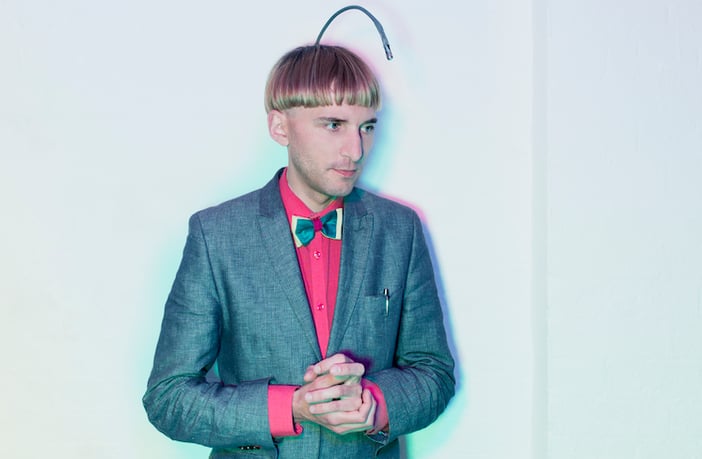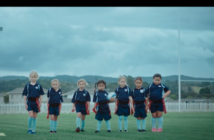The world is in the midst of a revolution in the generation and distribution of imagery, and the creative photography and advertising world is still absorbing the long-term technological and cultural trends generated by it.
The changes in the visual landscape have meant an overwhelming flow of visual styles through a variety of mediums, with the resulting imagery having an unquestionable impact on advertising and becoming integral to it.
Driving this impact is social media – which has ultimately raised consumers’ visual sophistication. Consumers are becoming more challenging in their expectations of visual content as they are being taught the techniques behind great imagery.
It’s because of this reason that brands need to go beyond amazing visuals in advertising and marketing. Consumers now care about purpose. Fuelled by the experience of customisation and personalisation, consumers are continuing to dissolve the mainstream.
At Getty Images the creative research team forecasts visual trends by drawing on an extensive set of resources. These include search and buying trends from the millions of visitors to Getty Images’ website each year, local insights from regional offices and expert analysis of the imagery trends in advertising and popular culture.
It’s from this research that we have six trends that will hugely influence how brands visualise themselves for the remainder of 2016 and beyond: Outsider In, Divine Living, Extended Human, Messthetics, Silence vs. Noise and Surreality.
‘Outsider In’

This trend is all about rebellion; people that push the envelope and visuals that break tradition. Celebrating those with anti-hero spirits and extreme style – what was once marginal is increasingly becoming mainstream.
Take the recent campaign for Trulia’s real estate site that showcased people in their houses indulging in the odd situations, such as nude Scrabble and whale-speak. The campaign had the slogan “Find A Home Where You Can Be You”. In 2016, brands are targeting consumers through images that express an ethos of nonconformity
‘Divine Living’

(Credit: Stuart Hall)
The trend ‘Divine Living’ focuses on meaningful consumption. As brands start to focus on values, reflection and revelation are front and centre of their campaigns. Consumers are purchasing with purpose and carefully selecting treasured objects and experiences over mass accumulation.
The NZ Transport Agency (NZTA) is a great example of a brand who is focusing on meaningful consumption in its advertising. Its recent campaign ‘Hello’, aimed at young drivers using their phones behind the wheel, saw passengers intercepting their driver’s hand as it reached for a ringing phone. The advertisement finishes with the words “Put me first, drive phone free” – aiming for drivers to think about the discomfort that their passengers can feel when they use their phone.
‘Extended Human’

(Credit: David Vintiner)
Technology is changing the way we live our lives: from sharing our experiences, making art and experiencing our surroundings. The ‘Extended Human’ trend is about our notion of personhood expanding, as we harness the power of technology in all areas of our lives.
An example of this in action is the “Cars That Feel” campaign by Toyota Australia. At Sydney’s VIVID event, the car maker displayed interactive messages on its Prius models such as ‘hug me’, inviting the public to build an emotional connection with the product. Toyota transformed these ordinary cars into emotional beings, allowing consumers to connect with the cars personally.
Extended Human brings to light the positive way in which man and machine can interact, demonstrating how technology is becoming an extension of us, ultimately expanding our ability to connect and communicate.
‘Messthetics’

(Credit: Andy Lo Pò)
Messthetics celebrates messy and beautiful images; this trend is all about the ugly aesthetic. Traditionally, we have always been a society that strives for beauty and perfection, but now people are craving extreme authenticity, as well as unpredictability.
Getty Images’ own recent campaign touches on this trend with an inspiring example of the “Endless Possibilities” our stock-art image libraries are capable of producing. In an effort that took four months to realise, AlmapBBDO’s team was able to assemble four easily identifiable portraits using nothing but photographs from our creative database. The result is a hodgepodge effect that makes for quite the memorable snapshot.
‘Silence vs. Noise’

(Credit: Felicity McCabe)
This trend can almost be seen as the opposite of Messthetics. Silence vs. Noise is focused on the quiet, restrained, and powerful. Fueled by the ‘less-is-more’ approach, it aims to engage our emotions through direct and uncomplicated imagery.
A unique example of the Silence vs. Noise trend is a campaign for Project Literacy called “The Alphabet of Illiteracy”, where letters of the alphabet are used to raise awareness around the global issues linked to illiteracy. The video features a children’s style cartoon vide to the light-hearted tune of “A, you’re Adorable” with the lyrics changed to address issues such as homelessness, aids, and child brides.
‘Surreality’

(Credit: Yagi Studio)
The Surreality trend is all about what’s possible as the opportunities for creativity become endless. Imagery is now being manipulated by techniques that can create surreal visuals, stepping away from the visual environment that has traditionally been dominated by realism.
The latest campaign from NZ financial services brand, Gem, looks to get personal with their target audience. The advertisement called “Got a plan? Now you can” uses surreal images to depict a series of New Zealanders who are turning their dreams into reality through smart financial planning.
For the rest of 2016, these six trends will guide brands and advertisers as they aim to deliver their key messages to an increasingly saturated visual world full of over inspired consumers. The key take out for brands is to look beyond amazing visuals in their advertising and marketing – it’s about purpose and personalisation. With culture and social media driving these trends, we have no doubt that they’ll grow and develop further as the year progresses.

- Jacqueline Bourke is the global creative insights and planning senior manager at Getty Images.




